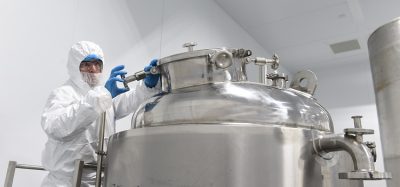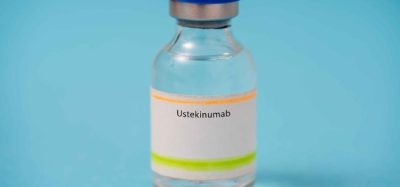Considerations for safety data migration methods
Posted: 26 September 2023 | Graeme Bones (ICON) | No comments yet
Pharmacovigilance regulation in the EU and beyond has continued to grow and become more stringent over the last decade. In this article, ICON’s Graeme Bones explains how to handle the different types of data migration methods and how companies can select the optimum approach to ensure data integrity is maintained.


Pharmaceutical companies regularly transfer databases as they shift to new systems or change service providers in pursuit of higher quality and increased efficiency. These database transfer activities must follow industry standards and pharmacovigilance regulation, which has become increasingly stringent over the last decade. The concept of good pharmacovigilance practice (GVP) has been implemented in multiple regions across the globe to ensure these migrations are validated and data integrity is maintained. GVP requirements are built on foundations of sound data quality and integrity, without which pharmacovigilance systems will not function.
Depending on the size and complexity of the dataset, pharma companies have the option of several migration methods from which to select the one most suitable for their needs and that maintains regulatory compliance. In each approach, the implementation should follow industry standard practices for migrations and the data should be thoroughly tested and validated in accordance with regulatory expectations – no matter how simple or complex the migration.
Data migration methods
Within this increasingly stringent pharmacovigilance regulatory landscape, it is imperative that pharma companies have the utmost confidence in the data migration process. Choosing the best approach to maintain data integrity requires careful consideration.
There are three main types of migration solutions: manual, E2B and E2B hybrid or programmatic. Each method has potential risks, capabilities and benefits depending on the requirements of the dataset and the complexity of the migration. Thus, companies must evaluate their data needs and specific requirements to determine which migration solution fits best.
During the evaluation process, companies should consider their available resources, time constraints, potential costs and risk assessment findings to help select the correct migration method. Additionally, the size of the dataset and robustness of the data will impact the relative risks and advantages of each method. Below, we summarise some of the benefits and considerations for each type of migration.
Manual migrations
Manual migration is the simplest and most cost-effective approach. This method works best for smaller case counts, typically less than 150 cases, and is especially useful where the E2B file cannot be produced from the source system and/or periodic reporting requirements do not exist. In this method, Individual Case Safety Reports (ICSRs) are manually entered into the target database using outputs obtained from the source database. It does not require any technical input or specialist scripts to extract and import data.
Manual migration is the simplest and most cost-effective approach… This method works best for smaller case counts”
As with any migration, a data migration plan should be in place detailing the system, activities, scope and deliverables, roles and responsibilities within the project. During migration, the case processing team will manually enter the data using the outputs obtained from the source database, following the workflow configuration, to ensure accuracy within the target database.
However, due to configuration differences between databases (such as code list definitions), cases may not always be an exact replica of the original case. Any discrepancies should be documented using a Known Difference document and the solutions or acceptance of the discrepancy are then agreed upon. Once all cases have been entered and reviewed and any discrepancies resolved, the data transfer is considered complete and a data migration summary report should be issued.
For smaller, simpler data transfers, manual migration is a relatively low-cost solution; it does not require lengthy downtimes and can typically be completed in three to four months. However, manual migration does require several operational resources to manually recreate the ICSRs in the target database with new unique case numbers. No metadata will migrate from the source database; therefore, obtaining historical data, such as audit trails and submission history, must also be factored into the project.
E2B and E2B hybrid migrations
The E2B migration methods are relatively versatile and can be used in multiple scenarios to bridge the manual and programmatic solutions. They work well for data volumes between 150 and 2,000 cases where neither a manual nor programmatic migration makes sense, or if there is only legacy data in which no follow-up or periodic reporting requirements are expected. This method also suits situations where there is no access to the source system, such as with mergers and acquisition (M&A) activities, or if the company does not have the funding or resources to execute a full database migration. If the pharma company requires a phased migration approach to accommodate a regulatory compliance timeline, this method will provide benefits.
For E2B and E2B hybrid migrations, it is important to consider the non-transferable data requirements for the database, as that will dictate the approach. Most non-transferable data can be added manually, but it may not be financially viable compared to a scripted approach, especially for larger case counts.
For E2B and E2B hybrid migrations, it is important to consider the non-transferable data requirements for the database”
If additional non-transferable data is required, a technical migration can be performed, which involves uploading ICSRs into the safety database as electronic E2B files with manual data entry for the additional data. This approach can be a quick and cost-effective way of transferring data with the appropriate case count; however, it still requires the database hosting provider to deliver technical resources to manage the upload of the E2B files into the target database.
If a script is required, this approach is usually referred to as an E2B hybrid migration. The list of non-transferable safety case data is fairly normalised for both E2B(R2) and E2B(R3) formats. Given that the company has a standard list of the required fields and matching queries to both extract the data from source systems and insert it into the target system, this method can be highly efficient, and the project timelines and quality benchmarks can match or exceed manual efforts.
E2B and E2B hybrid migrations can be completed in approximately four to six months. It is more cost effective than implementing a programmatic solution and provides improved quality, time and resource needs compared to manual entry for larger datasets. Additional benefits are that the cases retain their original case numbers and the level of testing and validation performed ensures that data integrity is maintained throughout each step of the data transfer.
Programmatic migrations
The most complex method of migrating data requires a far more technical approach. These migrations necessitate the assistance of the safety database host provider and should leverage the guidance of an industry-recognised subject matter expert.
The most complex method of migrating data requires a far more technical approach”
Programmatic migrations use standard database export functionality or custom scripts to extract the data from the back end and then programmatically insert or move the data directly into the target database. These types of migrations are perfectly suited for large datasets of 2,000+ cases, when cost or resourcing is not a constraint, the full dataset (including metadata) is required, or there is a case data merge component in play.
Planning for a programmatic migration is more robust than other methods. Working with the host provider, the data migration plan will include more technical information and the technical migrations should map to internal IT validation procedures, as well.
The benefits of a technical migration include the capability to import all ICSR metadata, source documents, communications, and other associated case data with the transfer, as well as maintaining an ICSR’s unique case number from the source database. There is a high degree of focus on the verification and validation activities performed to ensure that data integrity is maintained throughout all steps of the project. Both operational qualifications and user acceptance activities should be executed to ensure data veracity. This is important as more automated steps are introduced to the process and it is vital that checks are performed at each project milestone.
Before proceeding with a programmatic migration method, it is important to understand that by nature these are highly technical processes that require multiple steps in multiple environments to validate the data. This also pulls resources, requiring more technical and IT capability to manage the back-end work, configuration requirements, validation, etc.
Depending on the complexity of the migration requirements and the cleanliness of the data, the project will take at least five to nine months to complete. Due to the technical nature, project duration, specialist resources required and the validation effort, technical migrations will be a higher cost solution for transferring data.
Conclusion
Pharmaceutical companies may need to transfer their data between databases for multiple reasons – they have outgrown their old system, must upgrade to remain compliant, or have switched service providers to avail of more advanced approaches. When pharmacovigilance data is moved or migrated between systems such as safety databases, strict controls must be implemented to preserve the integrity of the data to align with the latest regulatory requirements. Companies have several options for compliant, validated migration methods but should carefully consider their constraints and capabilities to select the one that fits their data, quality, timeline, financial and resource needs.
About the author


Graeme is Director of Pharmacovigilance Systems at ICON. In this role, Graeme is responsible for all pharmacovigilance (PV) systems that facilitate adverse event data collection and reporting. With over 20 years of PV Systems experience, Graeme is focused on ensuring that ICON remains at the forefront of PV systems delivery, by utilising the latest technology solutions.
Issue
Related topics
Biopharmaceuticals, Data integrity, Drug Development, Drug Safety, Regulation & Legislation, Therapeutics








